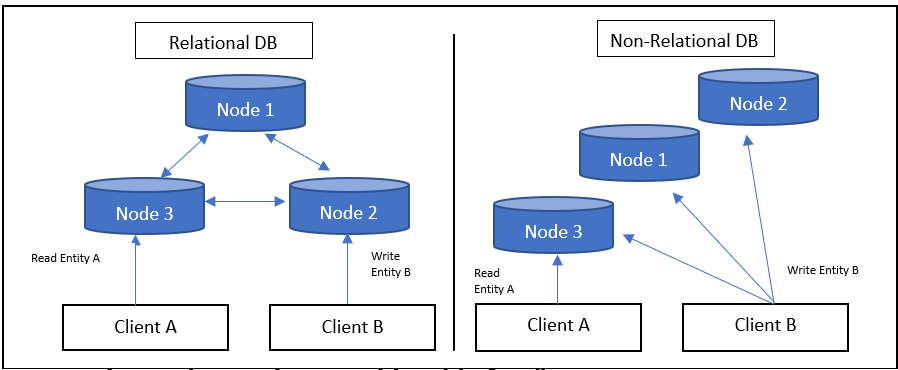CALCULATING CARBON IMPACT OF NON-RELATIONAL DB: A UNIQUE PERSPECTIVE
August 10, 2023
“The environmental impact of enterprise IT is a growing area of concern” of which database play a crucial role in constituting a significant portion of one’s environment. Particularly in large-scale data centers, these databases consume substantial energy. These databases can be extensive and exist in both on-premises and cloud environments.
Understanding the current carbon footprint specifically attributed to databases operating in the cloud is a complex and challenging task. To gain transparency regarding the database’s contribution to the overall carbon footprint, it is necessary to comprehend their:
- Underlying infrastructure
- Deployment Model
- Utilization
This information can be difficult to obtain, especially in the case of non-IAAS (Infrastructure as a Service) services, as infrastructure visibility is often ambiguous and cryptic.
Another complexity arises while distinguishing the carbon footprint calculation methodology between relational and non-relational databases as shown below in the diagram which highlights the lack of standardization in NoSQL distribution.

Calculating carbon emissions for non-relational databases presents complexities such as extracting consistent data due to flexible schemas, handling large data volumes, lacking standardized metrics, and managing distributed architectures. In contrast, relational databases simplify data extraction
“Therefore, comprehending and reaching the carbon emissions associated with Non-relational databases poses a challenging task same as scaling a mountain, yet it remains an achievable feat”
To progress, Sogeti has developed a methodology that uses the following approaches with respect to the different scenarios of hosting: –

When evaluating a Non-Relational database, it’s crucial to consider the total storage needed and the number of transactions it handles. Increased transactions directly impact the underlying processor’s workload. Transaction volume also fluctuates based on peak and non-peak times, which affects energy consumption. To calculate operational emissions, we determine the utilization compared to initial provisioning and convert it to measurable computing metrics. We then calculate carbon emissions based on the maximum and minimum power consumption of the service. When data is unavailable, we use a t-shirt sizing model based on studies, observations, public databases, training, and expert knowledge. Additionally, it’s important to consider data centre efficiency and the carbon intensity of the energy source to obtain a comprehensive assessment of carbon emissions related to operating Non-Relational databases in a data centre.
In conclusion, it is vital for organizations concerned about reducing emissions to comprehend and address the carbon footprint of databases, especially in cloud environments. Achieving this requires clear visibility into energy consumption and infrastructure efficiency, enabling accurate calculations of the carbon footprint. Factors such as storage requirements, transaction volume, and usage patterns should be considered to assess the energy consumption of NoSQL databases. We at Sogeti can help you to baseline your current carbon footprint, which can help you in implementing strategies to minimize environmental impact.
References:
https://www.cloudcarbonfootprint.org/docs/methodology/
https://docs.aws.amazon.com/dynamodb/index.html

Co-Author – Tanya Srivastava | Consultant
After finishing my MBA at the Indian Institute of Management in Ranchi, I received a PPO during my internship at Sogeti India and subsequently joined the One Deliver Assessment team in May 2022. Since then, I have worked as both a solution expert as well as on the delivery side of our Cloud Assessment. Currently, I have been actively involved in managing and working on Sustainability particularly Sustainable IT wherein our focus has been to establish methodology to help the organizations manage their enterprise IT in a more green way.

 English | EN
English | EN 
Very good article on Carbon Emission. Thank you for sharing it
Good work Tanya & Partho
Absolutely loved the blog post! It’s incredibly informative and thought-provoking. The insights shared are valuable, and I couldn’t agree more with the points discussed. One small suggestion would be to include some examples to further illustrate the concepts – I believe they could really make the content even more impactful. Looking forward to reading more from you!